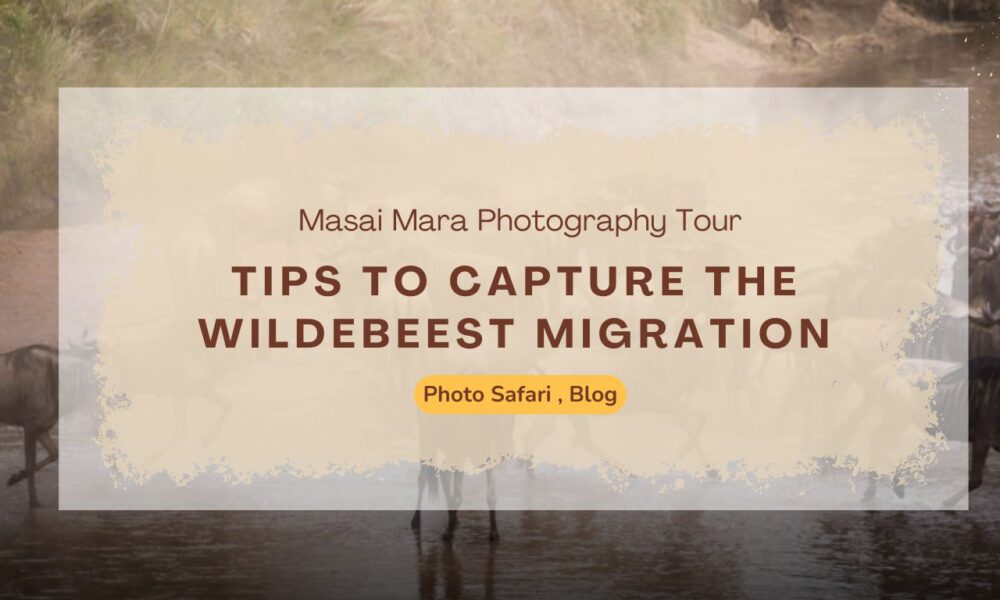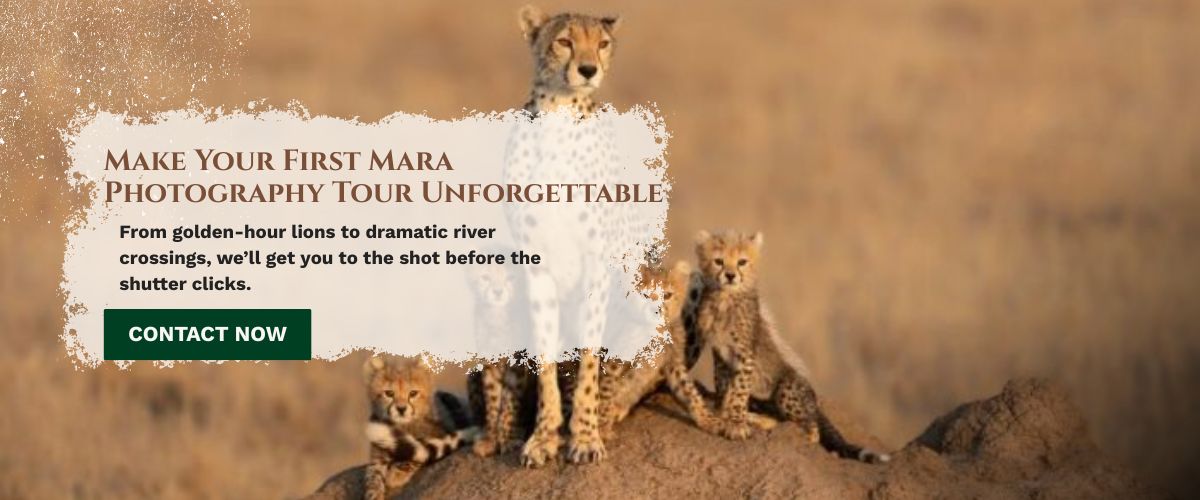Tips to Capture the Wildebeest Migration
If you’ve ever dreamed of witnessing nature’s grandest show, the Wildebeest Migration in the Masai Mara is it. Every year, over a million wildebeest, zebras, and gazelles move across the plains, crossing rivers and braving predators in a display of survival and instinct.
From where we are based here at Mara Siligi Camp, we’ve been lucky to watch this spectacle unfold season after season. And if you’re joining a Masai Mara photography tour or looking into the best Masai Mara photography tour packages, I’d love to share a few tried-and-tested tips to help you capture the magic through your lens.
Table of Contents
- Understand the Wildebeest Migration Cycle
- Choose the Right Masai Mara Photography Tour Package
- Time Your Visit Perfectly
- Essential Photography Gear for the Mara
- Master the Art of Capturing Action Shots
- Play with Light for Stunning Wildlife Photos
- Respect Wildlife and Keep Safe
- Why Staying Close to the Action Matters
- Closing Thoughts from the Mara
1. Understand the Wildebeest Migration Cycle
When you live here, you quickly learn that the migration isn’t a single moment — it’s an ongoing natural cycle that shapes life in the Mara. The Great Wildebeest Migration moves through both Tanzania and Kenya, and knowing its rhythm helps you plan the perfect Masai Mara photography tour.
- July to October – This is when the herds are in the Masai Mara, with dramatic Mara River crossings taking place just a short drive from camp. The action here is intense — wildebeest plunging into crocodile-filled waters, predators waiting on the banks, and dust-filled scenes that make for once-in-a-lifetime shots.
- January to March – Calving season in the southern Serengeti brings tender moments of newborn life alongside thrilling predator action. While not in the Mara, many of our photography guests plan combined Masai Mara photography tour packages with Serengeti extensions to capture this.
- April to June – The herds move north through Tanzania, slowly making their way back towards the Mara. This is a quieter time here, perfect for those who want fewer vehicles and a more intimate safari experience.
Understanding this cycle means you can position yourself — and your camera — at the right place and the right time. Whether you’re aiming for dramatic crossings or soft golden-hour portraits of grazing herds, timing is everything in wildlife photography.
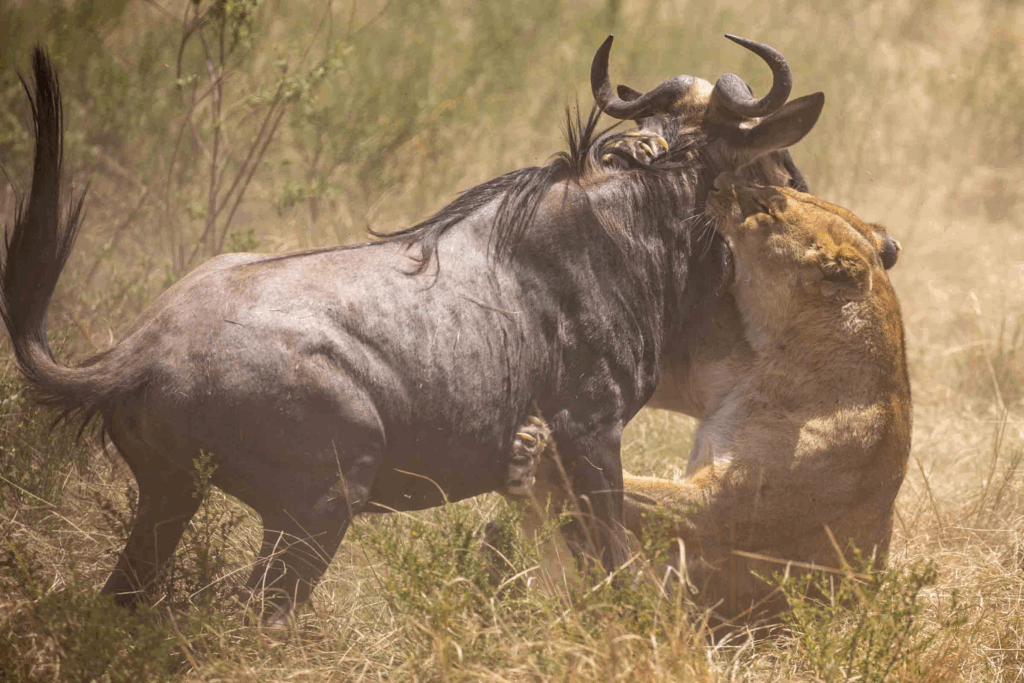
2. Choose the Right Masai Mara Photography Tour Package
Over the years, we’ve seen guests arrive on tours that unfortunately don’t give them the flexibility or vantage points they had imagined. The truth is, not all Masai Mara photography tour packages are created equal — and the right one can make all the difference between returning with a few nice snapshots and coming home with a portfolio full of powerful images.
Here’s what I always recommend looking for:
- Small group sizes – This is essential. In a smaller group, you’ll have more room to move around in the safari vehicle, store your photography gear, and position yourself for the perfect angle without feeling cramped.
- Experienced driver-guides – The best guides in the Mara don’t just drive you from point to point; they anticipate animal behavior, position the vehicle for the best light, and understand exactly when to wait for that perfect moment.
- Flexible schedules – Wildlife doesn’t run on a timetable, and your tour shouldn’t either. Choose a package that allows you to linger at a sighting, whether you’re waiting for a wildebeest to make the first leap into the river or a lioness to start her hunt.
- Proximity to key locations – Staying close to the migration routes, river crossings, and prime wildlife areas means you’ll spend less time driving and more time photographing.
Here at Mara Siligi Camp, we see how much of a difference this makes — our location inside the reserve keeps you close to the action from the moment you set out, giving you the best possible start to every game drive.
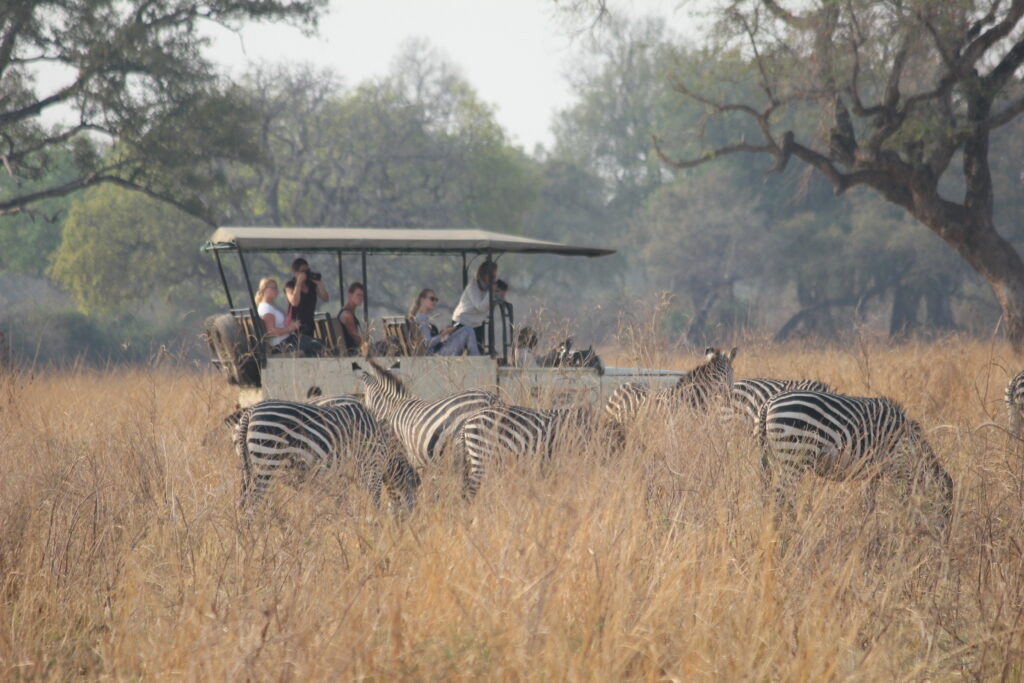
3. Time Your Visit Perfectly
The Masai Mara is breathtaking in every season, but when it comes to the Great Wildebeest Migration, timing is everything. Knowing exactly when to visit can transform your Masai Mara photography tour from memorable to truly extraordinary.
- Late July to early October – This is peak migration season in the Mara, when the herds fill the plains and the air buzzes with energy. It’s also when dramatic Mara River crossings happen almost daily — giving you the kind of action shots that make the long wait worthwhile.
- August & September – If your goal is to witness multiple river crossings, these months offer the highest chances. The concentration of animals, predators, and activity during this time makes it a dream for photographers looking to capture nature’s drama.
- Golden hours – Regardless of the month, the first light of dawn and the warm glow before sunset are pure magic for photography. Early mornings (around 6:00–7:30 AM) and late afternoons (around 5:00–6:30 PM) give you soft, golden light that flatters every shot — from the dust kicking up under a herd’s hooves to the silhouette of an acacia tree on the horizon.
Because these prime weeks are so sought after, many of our guests at Mara Siligi Camp reserve their spots months in advance. Being here at the right time means you’re not just seeing the migration — you’re capturing it at its most powerful.
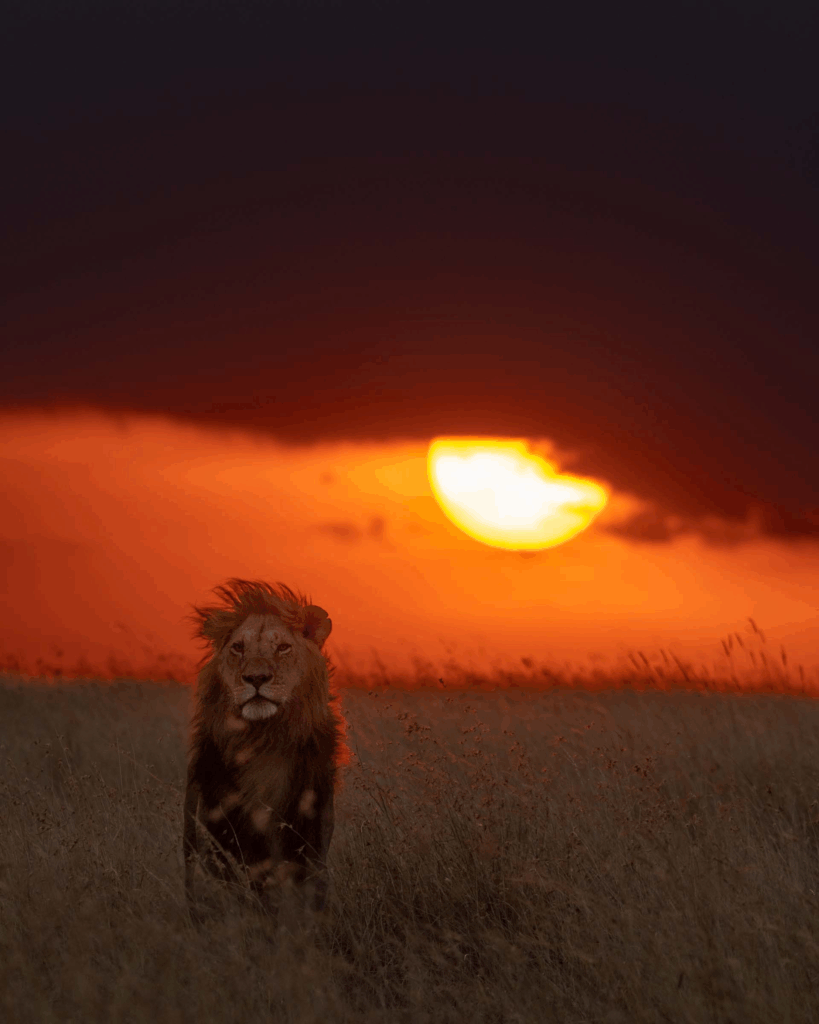
4. Essential Photography Gear for the Mara
Over the years, we’ve welcomed every kind of photographer to Mara Siligi Camp — from first-timers with a single camera and kit lens to seasoned professionals carrying multiple bodies, lenses, and tripods. No matter your experience level, having the right equipment will make your Masai Mara photography tour far more rewarding.
Here’s what I recommend packing:
- Telephoto lens (200–400mm or more) – Essential for close-ups of wildlife without intruding on their space. Whether it’s a leopard lounging in a tree or a wildebeest mid-leap during a river crossing, this lens will keep you safely at a distance while still filling your frame.
- Wide-angle lens – Perfect for capturing the vastness of the Mara plains, dramatic skies, and sweeping herd panoramas during the migration.
- Extra batteries & memory cards – Out here, there’s no such thing as too many. You’ll be shooting constantly, and running out of storage or power during a key moment is heartbreaking.
- Bean bag – Ideal for stabilizing your camera on the edge of the safari vehicle without the hassle of carrying a tripod.
- Weather protection for your gear – The Mara’s weather can change quickly. A sudden dust storm or short rain shower can catch you off guard, so pack rain covers and lens cloths.
If you’re staying with us at Mara Siligi Camp, we’ll help make sure your gear is ready before each game drive. From early morning battery checks to safe storage between drives, we know how important it is to be prepared — because the Mara never waits for you to change a battery or clean a lens.
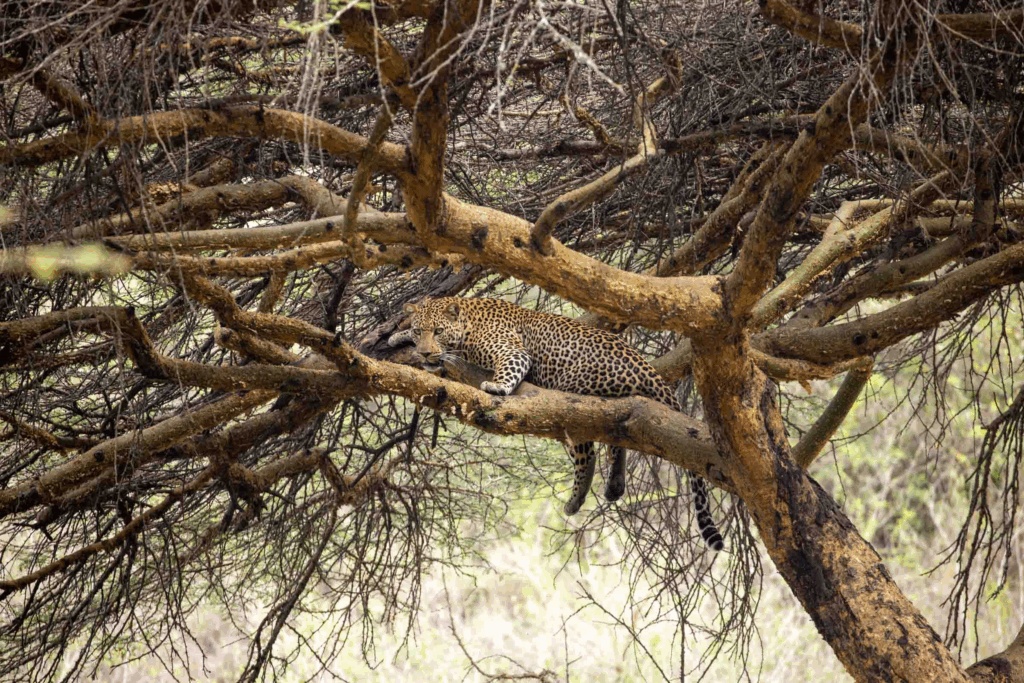
5. Master the Art of Capturing Action Shots
When it comes to photographing the Wildebeest Migration, timing and readiness are everything. River crossings, predator chases, and dramatic herd movements can happen in the blink of an eye — and if your camera isn’t ready, you might miss the moment of a lifetime.
Here’s what I recommend for action photography on your Masai Mara photography tour:
- Fast shutter speeds (1/1000s or faster) – This is crucial for freezing motion, whether it’s wildebeest splashing through the Mara River, a cheetah in mid-sprint, or dust swirling behind a galloping herd.
- Continuous autofocus – Wildlife rarely stays still. This mode allows your camera to track movement and keep your subject sharp even as it changes direction.
- Burst mode – Shooting in rapid succession increases your chances of capturing the frame, especially during unpredictable scenes like a crocodile lunge or a lioness striking.
- Read the signs – A restless, bunched-up herd near the riverbank often means a crossing is about to happen. Likewise, sudden bird calls or gazelle movements can signal predator activity nearby.
Here at Mara Siligi Camp, we’ve spent countless hours with guests at crossing points, waiting for that one brave wildebeest to take the first leap. Sometimes it happens within minutes, and other times it can take hours — but when it does, the reward is spectacular. Patience always pays off in the Mara, both for the experience and for the photographs you’ll treasure forever.
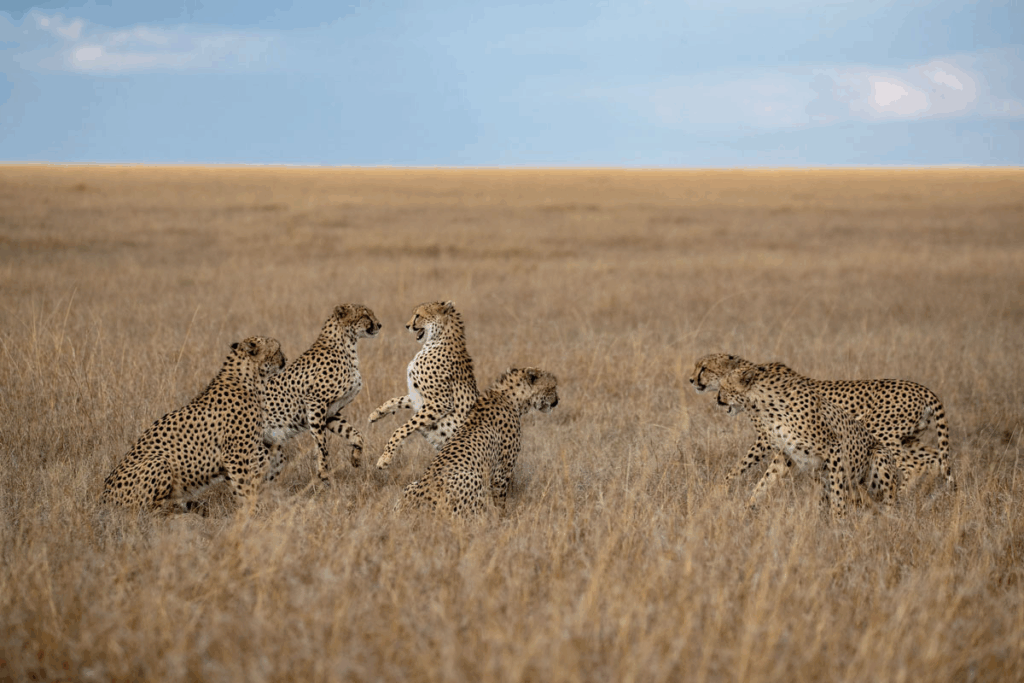
6. Play with Light for Stunning Wildlife Photos
One of my absolute favorite things about photographing in the Masai Mara is the quality of the light. Out here, the sun doesn’t just illuminate — it paints the landscape in gold, amber, and deep shadows that give your images a cinematic feel. If you’re joining us for a Masai Mara photography tour, learning how to use that light will take your images from good to extraordinary.
- Backlighting – Position yourself so the sun is behind your subject to create striking silhouettes against the sky. It’s especially powerful when photographing wildebeest kicking up dust during the migration — the golden halo effect is unforgettable.
- Side lighting – Shooting with the sun to your left or right helps reveal textures in fur, manes, and even the ripples in the Mara River. It adds depth and dimension that flat lighting can’t match.
- Golden hour magic – The hour after sunrise and the hour before sunset are pure gold for wildlife photography. The warm, soft light flatters every shot, whether it’s a lion’s mane glowing in the sun or an acacia tree standing tall against a pastel sky.
Our morning game drives at Mara Siligi Camp often start before sunrise, so you can be in position as the first light touches the plains. There’s something magical about watching the land wake up while you frame your first shot of the day — it’s a moment you’ll never forget, even after you’ve filled your memory cards.
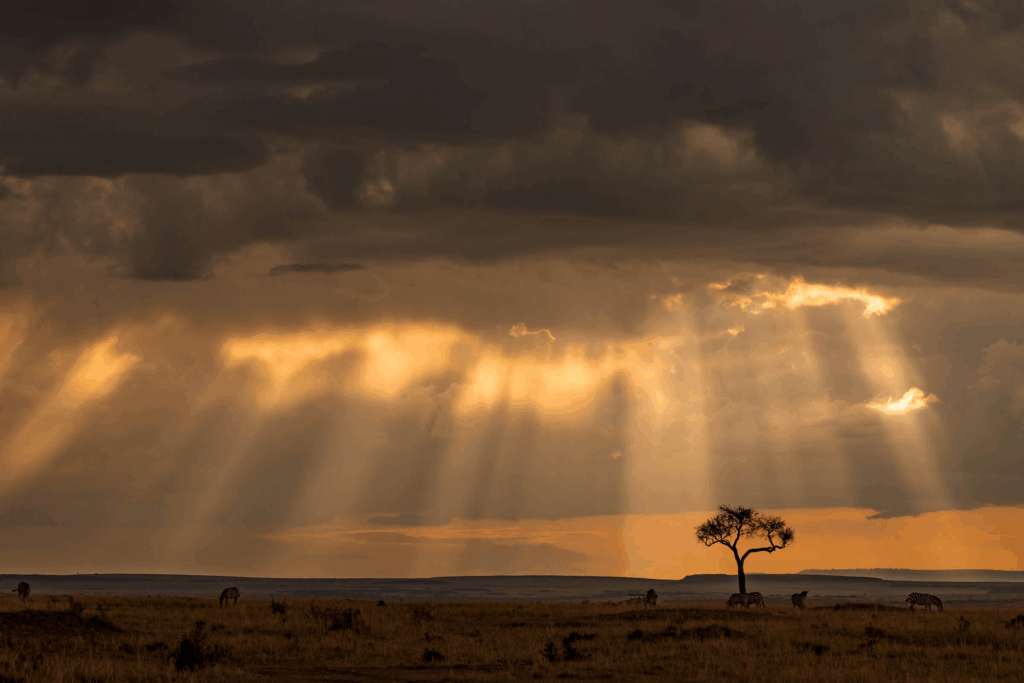
7. Respect Wildlife and Keep Safe
The Great Wildebeest Migration is a powerful reminder of nature’s raw beauty — and its fragility. Out here in the Masai Mara, we are guests in the animals’ home, and it’s our responsibility to witness their world without disrupting it. On your Masai Mara photography tour, following a few simple principles ensures both your safety and the wellbeing of the wildlife you’ve come to see.
- Keep a safe, respectful distance – Long lenses let you capture close, detailed shots without intruding on the animals’ space. Getting too close can cause stress and change natural behavior.
- Never block an animal’s path – Whether it’s a herd gathering for a river crossing or a pride of lions on the move, always allow them the right of way. The migration is about survival, and your presence should never alter its course.
- Stay inside the vehicle unless your guide advises otherwise – This is for your safety and the animals’ comfort. From the vehicle, you’re just another part of the landscape to them, which makes for more natural photographs.
At Mara Siligi Camp, we believe ethical wildlife photography tells a more authentic story. When you allow nature to unfold without interference, you capture images that are genuine, powerful, and deeply respectful — the kind you’ll be proud to share for years to come.
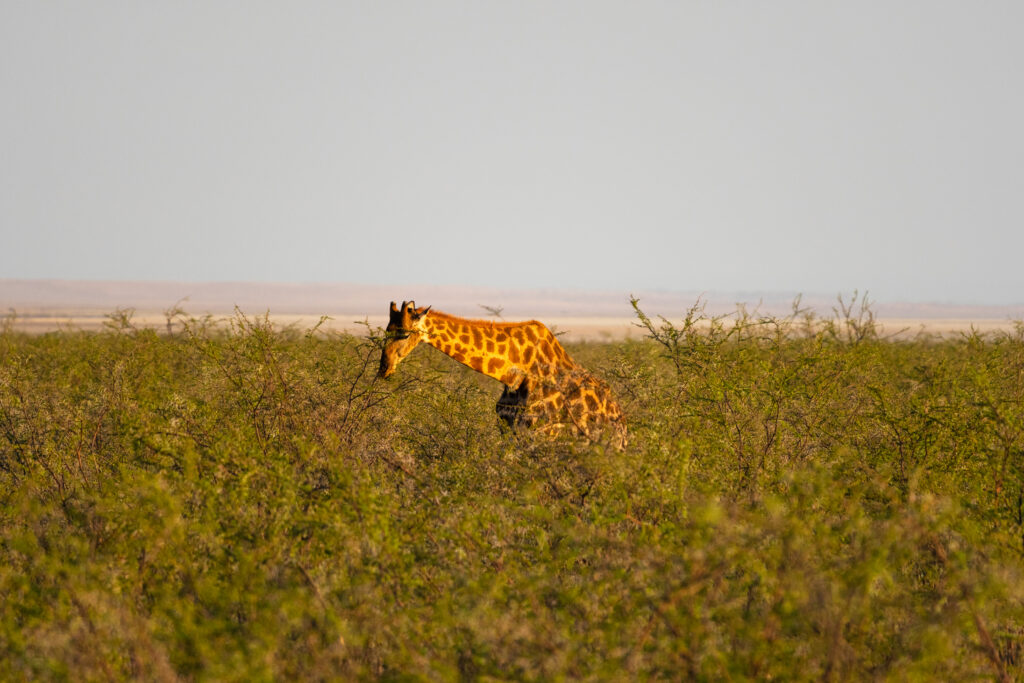
8. Why Staying Close to the Action Matters
One of the biggest lessons I’ve learned on safari is this — location can make or break your photography experience. The closer you are to the heart of the action, the more magical moments you’ll witness.
When you stay inside the Masai Mara Reserve, like here at Mara Siligi Camp, your game drives begin earlier, often before the sun peeks over the horizon. That means you can reach key wildlife hotspots before the crowds, capturing golden light, serene landscapes, and intimate animal encounters without a row of vehicles in your frame.
Our camp’s prime position keeps you near the migration routes, so your time is spent alongside the herds, predators, and birdlife — not just driving to find them. It’s the difference between chasing the shot and being ready when the moment unfolds right in front of you.
9. Closing Thoughts from the Mara
Every migration season has its own rhythm — and that’s part of the magic. You can never script exactly what you’ll see, but with the right timing, a bit of preparation, and plenty of patience, the Mara will reward you with moments that stay with you forever.
From here at Mara Siligi Camp, I’ve watched countless guests return from their drives, their smiles wide, cameras heavy with once-in-a-lifetime shots. It’s a joy that never fades. My hope is that these tips help you not only capture the images you dream of, but also leave you feeling more connected to this wild, beautiful place we’re lucky enough to call home.

